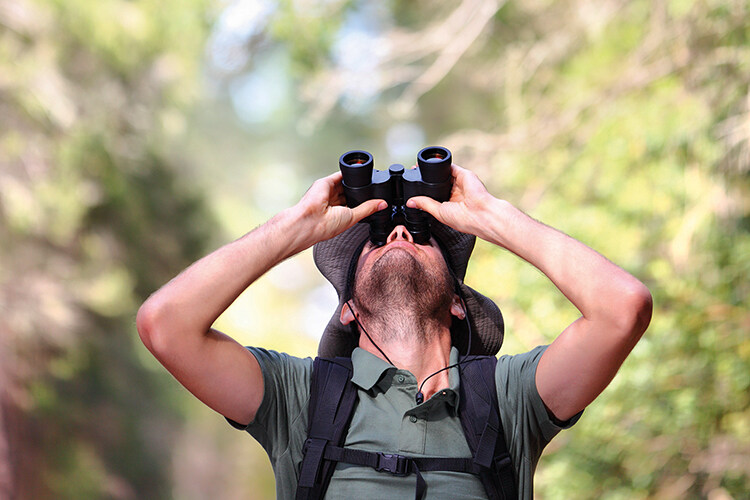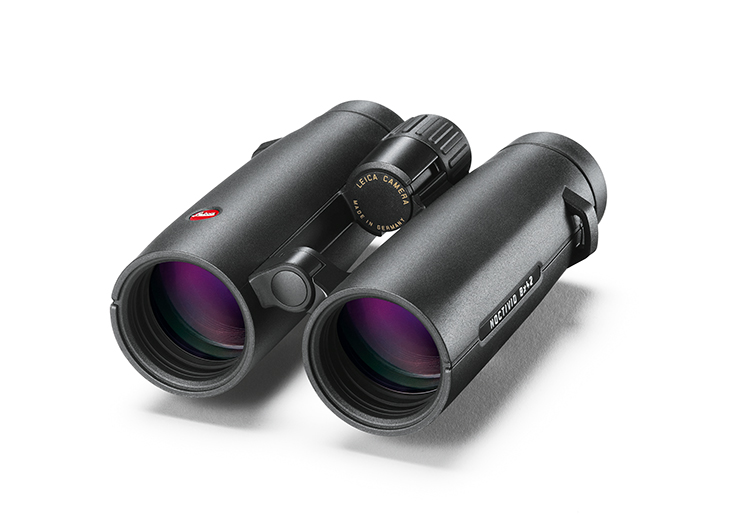
Birdwatching adds an extra layer of enjoyment to almost any outdoor pursuit – especially if you use a phone app
By Tristan Kennedy
Could you tell a yellow-bellied sapsucker from a speckled chachalaca? Or a tufted titmouse from a little bustard? Nope, neither could I. Or at least, I wouldn’t have been able to until a few months ago. These days, if I were to find myself in the eastern United States, Bolivia, or the steppes of central Kazakhstan, where these various species of bird live, I reckon I’d have a pretty good chance of identifying them correctly. Not because I’ve suddenly developed some preternatural ability as a twitcher. But because, about a year ago, I listened to one particular episode of the Adam Buxton podcast.
To be fair, I have always had a passing interest in ornithology. I was lucky enough to spend four years of my childhood living in Eswatini (then known as Swaziland), and then four further years in Malawi. Wildlife spotting was a big part of family holidays, and while my siblings and I were all about trying to spot big game – lions, leopards, or elephants – my dad often had his binoculars trained on the sky. A well-thumbed copy of the beautifully illustrated Roberts’ Birds of Southern Africa sat on the coffee table at home in case anything interesting flew into our garden, and I absorbed a certain amount of knowledge about birds just by osmosis.
Teenage life, and my family’s move back to the UK, meant my interest in bird spotting took a back seat for a while. And for the best part of 20 years, I didn’t spare much of a thought for our feathered friends. Then one day, like an exotic creature swooping in from the sky, Adam Buxton’s interview with the author Ian McEwan landed in my headphones. McEwan, it emerges, is a keen bird watcher. He’s also something of a personal hero. But it was his recommendation to use an app on your phone to identifty whatever wonderful creature you had stumbled across, rather than my admiration for him as an author, that really reignited my interest.
There are a handful of exceptional and free apps now available that makes identifying different species ludicrously simple. Take a photo of a bird, upload it, and the phone will tell you what it is with an impressive degree of accuracy. Didn’t manage to snap a decent photo? You can select characteristics, colouring, and behaviours that you’ve witnessed and it’ll give you a range of options.
It’s a bit like having every edition of Roberts’ Birds of Southern Africa in your pocket (as well as its Asian, European and US equivalents) and then having a full-time guide to point out which of the beautifully illustrated birds you’re looking at. But the apps’ most magical functionality are their sound ID features. It’s like Shazam for birds. You simply tap to record whenever you hear a bird singing, screeching or chattering, and the app will tell you which species you’re listening to.
Not only are they incredibly good at identifying individual birdsong, they are also brilliant at separating out the sounds of multiple species, even when they’re singing over each other. They work at a distance (mine has correctly identified the cry of a buzzard circling hundreds of metres over my head) and can even cut through background noise – picking out birdsong amid human conversation, for example, or against the white noise given off by a busy road. Some of the accuracy, I’m sure, must depend on the sensitivity of your phone’s microphone. But I’ve yet to hear, with the naked ear, a birdsong that my app couldn’t correctly identify.
Initially, I viewed this gizmo on my phone as something of a curiosity. A cool tech toy that would be fun to mess around with for a bit. But the more I used it – on walks, mountain biking trips, and even ski touring excursions – the more I got into it. Just like when I was a kid, I found myself learning by osmosis – and the process of learning is strangely addictive.
Like any hobbyist taking up a new pastime, my interest in bird watching has led to me buying a bunch of new gear I didn’t know I needed. I wanted to be able to see all the birds my app was hearing, so I went out and bought myself a new pair of binoculars. I justified the purchase of a new Thermos, too, and although I’ve been able to resist the temptation to buy a huge new zoom lens for my camera, it surely won’t be long before I crack.
For all that I enjoy researching and investing in new kit, the best thing about re-awakening my inner twitcher has been adding a whole new layer of interest to my existing outdoor hobbies. Keeping my eyes and ears out for birds – and using my phone to identify them – means I now see, hear, and appreciate the outdoors in a whole different way. Whether it’s observing squabbling terns on a surf trip, catching sight of a golden eagle while climbing, or just correctly identifying the cackle of a jay in my back garden, my phone now makes being outside more interesting. At last a positive reason to justify for my mobile phone addiction.
It’s no exaggeration to say that this one app has helped give me a whole new perspective on the natural world. Even if I never read another Ian McEwan book again, nor listen to another episode of Adam Buxton’s podcast, I owe them both a huge debt of gratitude. Well, them and the team who recorded all those chachalacas, sapsuckers and titmouses (or should that be titmice?) in the first place.
Wishlist – Three items that will make birdwatching better

The Essential: Animal Miki Winter Wetsuit – £75
Binoculars are the basic tool of any birdwatcher, and while this pair by the famous German camera company Leica are far from basic, they are worth every penny. These are 10×42, meaning they offer 10 times magnification, with a large field of vision. They offer a close focus range of 1.90 metres and an extremely fast focus at longer distances, allowing you to easily keep any bird in sight. As you’d expect from Leica, the build quality is second to none, and these feel chunky and robust in your hands. But their main selling point is their pin-sharp image quality. You’ll never miss a sighting again. leica-camera.com
Click here to get yours via Amazon

The Luxury: Yeti Rambler 18oz Thermos Flash – £30
Yeti are a US brand which builds tough-as-nails Thermos flasks and cooler boxes for all manner of outdoor activities. This, their flagship double-vacuum Thermos flask, is made from kitchen-grade stainless steel and designed to take a beating. It’ll keep cool drinks cold and warm drinks hot for hours on end, and its special ‘hotshot cap’ is engineered to make spillage all but impossible. We’ve listed this as a luxury item, because it’s not, strictly speaking, essential. But really, when it only costs £30, can you afford to be without? uk.yeti.com
Click here to get yours via Amazon

The Surprisingly Useful: VOITED Slumber Jacket – £199
If you’re serious about seeing certain species, you’re going to need to get up before dawn and stay out after dusk. For these kinds of out-of-hours missions – or for any sort of camping trip, really – a good down jacket and a decent sleeping bag are essential. We’d say the VOITED Slumber Jacket kills two birds with one stone, but that sort of birdicidal metaphor feels in slightly poor taste here, so let’s just say it fulfils both functions really well. The best thing about this is that moment when you transition from sitting round the campfire to crawling into your tent. Instead of having to remove a warm coat and climb into a cold sleeping bag, simply unfold the foot compartment, and hey presto, you’re ready for bed. voited.co.uk




